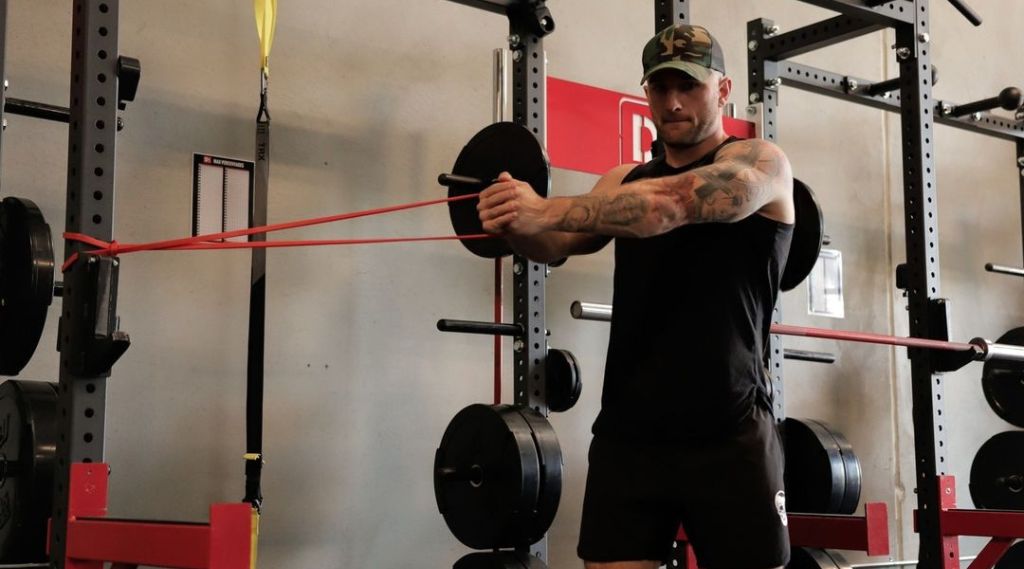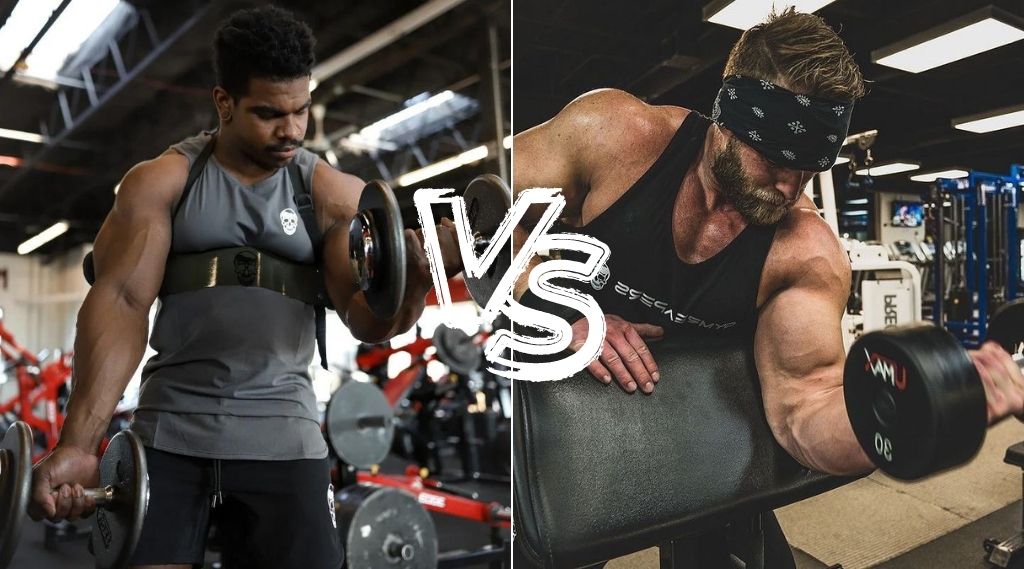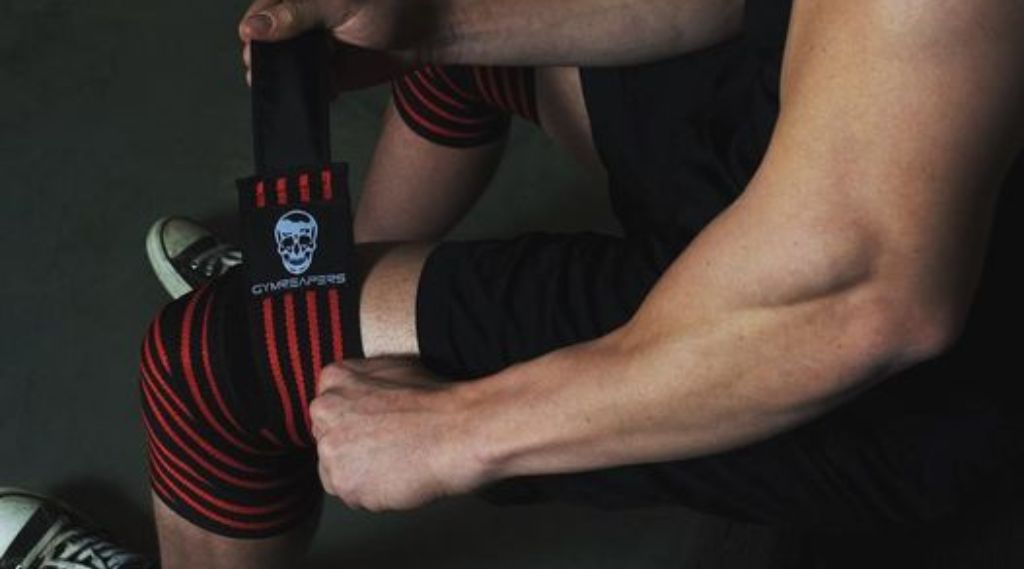If you’re new to resistance band training and you’re wondering where to start, then you’ve come to the right place. As an experienced personal trainer, I can teach you the best ways to use resistance bands to kickstart your fitness journey.
Make the most of resistance bands by picking the right type (and tension), having two to four weekly training sessions, and doing four to six movements per session. Some of the best beginner-friendly band exercises to include are rows, glute bridges, chest presses, lateral walks, seated hamstring curls, and squats.
To help set you on the right path, I’ll explain everything you need to know about using resistance bands as a beginner, and highlight some common mistakes to avoid.
Key Takeaways
7 Benefits Of Using Resistance Bands For Beginners

1. Less Intimidating
While it takes time to get used to bands and the resistance they provide, beginners generally find them far less intimidating, especially compared to free weight training (i.e. dumbbells & barbell movements).
Bands allow newbies to ease into resistance training to develop a strong foundation of basic movement patterns (squatting, hinging, pulling, and pushing) so that they can transition to weight training more confidently over time.
Related: Resistance Bands Vs Weight: What Are the Differences?
2. Versatile
Despite their simplicity, resistance bands are incredibly versatile so learning how to use bands can provide beginners with a solid foundation to build upon later on in their fitness journey.
Bands can be used to:
- Modify bodyweight movements (i.e. push ups, pullups) by increasing or decreasing their difficulty
- Activate muscles (i.e. glute activation) to prepare them for training
- Work on mobility exercises for the hips, back, shoulders, etc.
- Ease into compound movements (i.e. squats, deadlifts)
- Perform isolation exercises like bicep curls and tricep extensions
- Do high-intensity interval training (HIIT)
- Increase the difficulty of barbell movements like the squat (more suited for advanced lifters)
3. Portable
Bands are compact, light, and portable. Some resistance band sets, like this one, even come with a small bag to organize the bands and attachments (handles, ankle straps, etc.).
They won’t take up any space at home, and you can take them with you for outdoor workouts and while traveling to help you stay consistent with the exercise habit that you’re building.
4. Teach Proper Form
Bands have linear variable resistance (LVR), which means the tension gradually increases as the band lengthens. The advantage of this unique characteristic is that it’s harder to “cheat” the movement by using jerking motions and momentum to do more reps or lift more weight.
As a result, bands force you to do each repetition slowly and with good body control, resulting in superior muscle activation and reduced risk of injury.
“Because of the strength curve (low resistance at the beginning, maximum at the end), bands do seem to give a better mind-muscle connection and peak contraction than free weights. That isn't true of all exercises, but on quite a few – like lateral and front raises, curls, and triceps pressdowns – it is.”
-Christian Thibaudeau, renowned strength and bodybuilding coach
Developing proper form early in your training career will be highly beneficial even if you eventually decide to move on from bands and transition to gym machines and free weights.
5. Safer Than Free Weights
When used correctly, bands tend to be safer than free weights because (1) there isn’t a risk of dropping a band on yourself and (2) bands tend to be more joint-friendly and less likely to put significant stress on the knees, hips, back, shoulders, elbows, or wrists.
This makes them ideal for beginners who may be more susceptible to injury as they learn how to move properly and how to use equipment correctly.
6. Great for Full-Body Training
As a beginner, you might be reluctant to use resistance bands because you may be worried that they aren’t as effective as gym workouts; luckily, that’s not true.
As mentioned above, bands offer a ton of versatility, and you can use them in many ways and for countless activities to train all the major muscles in your body from different angles.
Plus as a beginner, any type of resistance training will be a brand new stimulus, so you will make progress no matter how you choose to start (bands, free weights, barbell training).
7. Good Overloading Potential
The great thing about bands is that you can start with almost no tension and gradually increase the resistance as you build muscle and become familiar with the different exercises.
For instance, the Military Resistance Band Set by Gymreapers includes five bands, each covering a specific tension range:
- Desert Tan: 20-35 lbs.
- OD Green: 30-60 lbs.
- Dark Earth: 40-80 lbs.
- Ranger Green: 50-120 lbs.
- Coyote Brown: 60-150 lbs.
Take the banded squat as an example. You can start with Desert Tan and gradually work up to Coyote Brown as you build strength and develop your quadriceps to continue to challenge yourself.
Related Article: Are Resistance Bands Good for Weight Loss? What Science Says
Resistance Band Training Considerations For Beginners

Now that you’re familiar with the benefits of resistance band training, let’s discuss some key considerations.
Level Of Resistance
As with free weights and gym machines, picking the correct resistance is crucial for effective training. Choosing the right band allows you to challenge your muscles enough to build strength, without overdoing it.
If there isn’t enough resistance, then it will take longer to see progress; if there is too much resistance, you will likely end up “cheating the movement”, limit muscle activation, and increase your risk of injury.
A general rule of thumb for beginners is to pick a band that allows you to do at least 10 to 12 slow and controlled repetitions through a full range of motion for each exercise.
If you do decide to perform fewer reps with more resistance, then be mindful of your technique and avoid swinging your body and using jerking motions to complete your reps.
How Often to Train
The frequency that you train with resistance bands will vary based on your schedule and the time you have available to dedicate to your workouts, but you should aim for 2 to 4 workouts per week for the best results.
My recommendation is to train each muscle group twice per week, which can be accomplished in the following ways:
- 2 workouts per week: both full body days
- 3 works per week: lower body, upper body, full body
- 4 workouts per week: upper, lower, upper, lower
In an ideal world, you would have a rest day between each session to allow your body to recover, but this isn’t always possible. So, for back-to-back sessions try and avoid training the same muscles.
For example, if you train your chest and shoulders on Monday, don’t train your triceps on Tuesday because that muscle group is active during most chest and shoulder movements.
Number of Movements Per Workout
The number of movements you do per workout will depend on your overall frequency. If you train more often, do fewer exercises, and vice-versa (fewer workouts = more movements per session).
If you’re working out three to four times per week then you should be performing four to six movements per session. Spread the activities across multiple exercises to train all the major muscles in your body.
Use your best judgment and experiment to see how much training you can handle and recover from without feeling excessively sore or beat up.
Training Volume (Sets & Reps)
I recommend you do 3 to 5 of 10 to 12 reps per exercise. Avoid doing fewer than ten reps per set because that could affect your technique, especially while you’re still learning how to perform the exercises.
You can do some sets in the higher rep ranges (e.g., 12-15; 15-25+) to keep things interesting, but do so sparingly and only on isolation exercises like bicep curls.
10 Best Resistance Band Exercises For Beginners
1. Banded Glute Bridges (Glutes and Hamstrings)
How To
-
Loop a hip band around your thighs and lie on your back.
-
Bend your knees, engage your abs, and inhale.
-
Drive your hips toward the ceiling and squeeze your glutes. Have your knees pointing out.
- Slowly lower your buttocks to the floor and exhale.
2. Standing Horizontal Band Rows (Upper Back)
How To
- Attach a loop band at chest level––for example, with a door anchor.
-
Grab the band with both hands, step back, and extend your arms forward.
-
Puff your chest out and inhale.
-
Pull the band to your upper stomach and squeeze your upper back.
- Slowly extend your arms and exhale.
3. Band Pull Aparts (Shoulders and Upper Back)
How To
-
Grab a loop band with both hands.
-
Extend your arms in front of your body with palms facing down.
-
Bring your chest out and take a breath.
-
Pull the band apart in one fluid motion. Squeeze your upper back.
- Slowly release and exhale.
4. Standing Bicep Curls (Biceps)
How To
-
Step over a loop band and grab the opposite end with both hands.
-
Stand up and bring your chest out. Have your palms facing forward and elbows to your sides.
-
Inhale and bend your arms, squeezing your biceps hard.
- Slowly extend your arms and breathe out.
5. Band Tricep Extensions (Triceps)
How To
-
Attach a band above your head. Loop it over a pull-up bar or use a door anchor.
-
Grab the opposite end of the band with both hands.
-
Position your elbows to your sides and have your palms facing down.
-
Bring your chest out, inhale, and extend your arms.
- Slowly bend your arms and exhale.
6. Band Chest Press (Chest)
How To
-
Attach a band at stomach height.
-
Face away from the band, grab both ends, and step forward.
-
Bend your arms and have your elbows at your sides.
-
Bring your chest out and take a breath.
-
Press the band forward and squeeze your chest.
- Slowly bring your elbows to your sides and exhale.
7. Band Lateral Walks (Glutes and Thighs)
How To
-
Loop a hip band over your thighs.
-
Lean your torso forward a bit and bend your knees several degrees.
-
Inhale and step to the right.
-
Continue stepping to the right for 10 to 20 more reps.
- Reverse direction and repeat for the same number of steps.
8. Band Squats (Quadriceps and Glutes)
How To
-
Step over a loop band and wrap it behind your head.
-
Grab the band with both hands for support, and bring your chest out.
-
Have your feet hip-width apart with your toes pointing slightly out.
-
Inhale and descend until your thighs are parallel to the floor.
- Press through your heels and return to the top as you exhale.
9. Seated Hamstring Curl (Hamstrings)
How To
-
Attach a loop band somewhere low. You can use a band door anchor.
-
Wrap the band over your feet, take a couple of steps back to stretch the band, and sit on a chair or gym bench.
-
Maintain an upright torso, inhale, and bend your knees against the resistance.
- Flex your hamstrings and slowly extend your legs as you exhale.
10. Standing Band Pallof Press (Core)
How To
-
Secure a loop band at stomach level.
-
Grab the band with both hands, turn your right shoulder to it, and take one or two lateral steps away.
-
With your arms bent, bring your chest out, inhale, and squeeze your abs.
-
Press the band forward.
- Slowly bend your arms and exhale.
Beginner-Friendly Resistance Band Workout
Here is a sample full-body resistance band workout that works great for beginners:
|
Exercise |
Sets |
Reps |
Rest Period |
|
Band Squat |
3-4 |
10-15 |
90-120 secs |
|
Band Chest Press |
3-4 |
10-15 |
90-120 secs |
|
Standing Horizontal Band Row |
3-4 |
12-15 |
90-120 secs |
|
Banded Glute Bridge |
3-4 |
15-20 |
90-120 secs |
|
Standing Band Pallof Press |
3 |
15-20 |
60-90 secs |
You could include this workout as part of a 2-day split by adding another full body workout on another day of the week; or use it as part of a 3-day split by adding an upper body and a lower body workout throughout the week.
Best Resistance Bands For Beginners

The Military Resistance Band Set by Gymreapers is the best option for beginners because it includes five bands that cover different tension levels, which allows you to perform a variety of exercises and progress over time.
You can start with the lightest band (Desert Tan - 20 to 35 lbs) and gradually work up to Ranger Green (50 to 120 lbs) or even Coyote Brown (60 to 150 lbs).
If no single band offers the right amount of tension, you can pair two or more bands to create the necessary overload and provide the resistance your muscles need.
For instance, if Dark Earth (up to 80 lbs) is too light and Ranger Green (up to 120 lbs) is too tough, combine Desert Tan and OD Green for up to 95 lbs of resistance.
Another great thing about the military set is that it comes with a small bag for storing your bands, which means they don’t take up space at home, and you can take them with you for outdoor workouts and while traveling.













Leave a comment
All comments are moderated before being published.
This site is protected by hCaptcha and the hCaptcha Privacy Policy and Terms of Service apply.